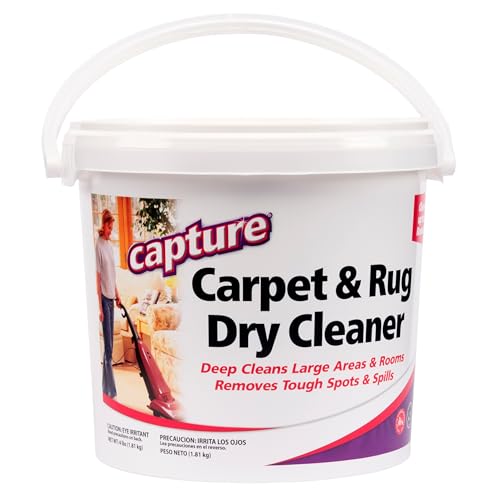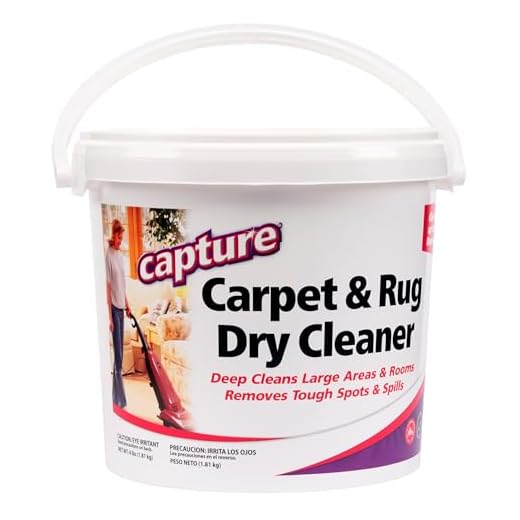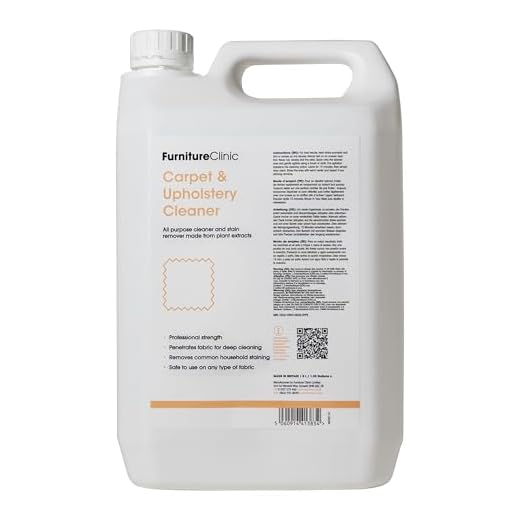








Act swiftly with a clean cloth or paper towel to absorb as much moisture as possible from the stain. Blot rather than rub, as friction can cause the fibres to fray. Once you’ve soaked up the excess, prepare a solution by mixing a teaspoon of mild dish soap with two cups of lukewarm water. Dampen a fresh cloth in this mixture and gently dab the affected area.
After treating the stain, rinse the fabric with cold water using another clean cloth. This step is crucial to remove any soap residue that could attract dirt later. To finish, absorb remaining moisture with a dry towel and let the area air dry completely. Keeping a fan nearby can help speed up the drying process, ensuring no lingering odours.
For stubborn spots, consider a solution of white vinegar and water in equal parts. Apply it sparingly, as too much moisture can damage the fibres. Always test any cleaning solution on an inconspicuous area first to avoid discolouration. Regular maintenance and prompt action during incidents will keep your natural fibre flooring looking its best.
Techniques for Removing Mess from Natural Fibres
Start by gathering the right materials: a pair of gloves, a spoon or spatula, paper towels, a mild detergent, and white vinegar. These items will help tackle the issue effectively.
- Put on gloves to protect your hands.
- Use the spoon to gently lift the solid matter without pushing it deeper into the fibres.
- Blot the area with paper towels to absorb any moisture. Avoid rubbing, as this can damage the texture.
Preparing a Cleaning Solution
Mix equal parts of mild detergent and white vinegar in a bowl. This combination is safe for delicate materials and helps neutralise odours.
- Apply a small amount of the solution to a clean cloth.
- Gently dab the stained area, working from the outside in to prevent spreading.
- Continue blotting until the stain lifts. Rinse the cloth in cold water and repeat as needed.
Final Steps
Once the area is clean, rinse with cold water to remove any residue from the cleaning solution. Blot again with a dry towel to absorb excess moisture. Allow the spot to air dry completely, avoiding heat sources that could shrink the fibres.
Regular maintenance can help prevent future mishaps. Consider using a protective spray designed for natural textiles to create a barrier against stains.
Gather Necessary Cleaning Supplies
Before tackling the challenge, assemble the following items: rubber gloves, paper towels, a plastic bag for disposal, a soft-bristle brush, a vacuum cleaner with a hose attachment, and appropriate cleaning agents designed for delicate fibres. A mixture of white vinegar and water can work wonders, while enzyme-based cleaners are effective for breaking down organic material.
Additional Tools
Consider having a spray bottle handy for your cleaning solution, which allows for easy application. A clean cloth or sponge is also useful for blotting. If there are any lingering odours, a carpet deodoriser can help refresh the area. Always check if the products are safe for your flooring type to avoid damage.
Helpful Resources
While you’re preparing, you might find it interesting to know about what other foods might interest your pet. For example, will dogs eat hot food–it’s worth exploring their dietary preferences to ensure a happy and healthy companion.
Remove Solid Waste Carefully
Use a plastic bag or a scoop to lift the solid matter without grinding it into the fibres. Ensure you grasp it from the edges, avoiding contact with the surface below. This prevents any residue from spreading further. If the waste is stuck, gently use a spatula or a similar tool to dislodge it, being careful not to damage the texture beneath.
Dispose Properly
Seal the collected material tightly in the bag to contain any odour and bacteria. Dispose of it in an outdoor bin. Avoid flushing it down the toilet, as this can cause plumbing issues.
Check for Stains
Once the bulk is removed, inspect the area for any discolouration. If you notice any marks, it’s time to use your cleaning solution to treat the spot. Act quickly to minimise the chance of permanent staining.
Blot Stains with Appropriate Solutions
Utilise the following solutions to tackle the stain effectively:
- Vinegar and Water: Mix one part white vinegar with two parts water. Dampen a soft cloth with this solution and gently blot the stained area. Avoid rubbing, as this may damage the fibres.
- Dish Soap Solution: Combine a teaspoon of mild dish soap with a cup of lukewarm water. Apply the solution to a cloth and pat the stain, working from the outside in to prevent spreading.
- Hydrogen Peroxide: For more stubborn marks, mix a tablespoon of hydrogen peroxide with a cup of water. Test on an inconspicuous area first, then dab the stain with a cloth soaked in the solution.
- Enzyme Cleaner: Choose a product specifically designed to break down organic matter. Follow the manufacturer’s instructions and apply it directly to the stain, allowing it to sit for the recommended time.
After applying any solution, always blot with a clean, dry cloth to absorb excess moisture. Repeat the process as needed until the stain is removed. Ensure the area is well-ventilated while working with these solutions to avoid lingering odours.
Finish by rinsing the treated area with clean water and blotting again to remove any residue. Allow the spot to air dry completely before resuming normal use of the area.
Neutralise Odours from Wool Carpet
For persistent smells, a mixture of white vinegar and water can be a game-changer. Combine equal parts of both in a spray bottle. Lightly mist the affected area and let it sit for about 15 minutes before blotting with a clean cloth. This will help break down the odour molecules.
Baking soda is another powerful ally. After treating the area, sprinkle a generous amount over the spot. Let it rest for several hours or overnight to absorb any lingering scents. Vacuum it up thoroughly to ensure no residue remains.
If the odour persists, consider using an enzymatic cleaner specifically designed for organic stains. These products contain enzymes that neutralise smells by breaking down the organic material at a molecular level. Follow the manufacturer’s instructions for best results.
For a natural approach, a few drops of essential oils like lavender or tea tree oil mixed with water can elevate the freshness of your space. Spray lightly over the area; just be cautious as some oils can cause discolouration, so test it first on a hidden spot.
Routine ventilation of the room helps keep the air fresh. Open windows and use fans to encourage airflow, further reducing any remaining odours.
Prevent Future Accidents on Carpet
Establish a regular bathroom schedule for your furry friend. Take them out first thing in the morning, after meals, and before bedtime. Consistency helps instil good habits.
Consider a designated outdoor potty area. This gives your pet a specific spot to relieve themselves, making it easier for you to monitor their behaviour. Use positive reinforcement, like treats or praise, when they use the designated space.
Pay attention to signs that your canine companion needs to go outside, such as pacing, whining, or sniffing around. Being proactive in recognising these cues can prevent unexpected messes.
Diet and Health Monitoring
A well-balanced diet can significantly impact your pet’s digestive health. Consult your veterinarian to choose high-quality food that suits their needs. Keep an eye on any changes in their bathroom habits as they can indicate health issues.
Regular vet check-ups are crucial. They can help identify any underlying health problems that may contribute to accidents indoors. Don’t hesitate to discuss any concerns with your vet.
Training and Behavioural Techniques
Invest time in training sessions focusing on obedience and commands. Teaching your pet basic commands like “sit” and “stay” can enhance your control during outings. Use a leash for better management while outside, ensuring they are focused on their task.
Consider crate training. Dogs naturally avoid soiling their sleeping area, making this an effective method for house training. Ensure the crate is a comfortable space, and gradually increase the duration they spend in it.
| Tips | Benefits |
|---|---|
| Regular bathroom schedule | Establishes routine and reduces accidents |
| Designated potty area | Encourages good habits and easier monitoring |
| Dietary adjustments | Improves digestive health and reduces accidents |
| Training sessions | Enhances control and understanding |
| Crate training | Promotes self-discipline and reduces mess |







